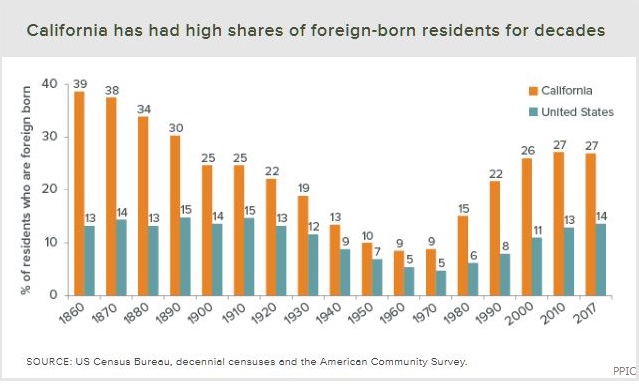
|
|

|
|
| April 20, 2024 |
|
Looking at ourselves: Immigrant population changing 
California is home to almost 11 million immigrants—about a quarter of the foreign-born population nationwide.
In 2017, the most current year of data, 27% of California’s population was foreign born, more than double the percentage in the rest of the country. Foreign-born residents represented at least one-third of the population in five California counties: Santa Clara, San Francisco, San Mateo, Los Angeles, and Alameda. Half of California children have at least one immigrant parent. More than half (52%) of California’s immigrants are naturalized US citizens, and another 34% have some other legal status (including green cards and visas). According to the Center for Migration Studies, only about 14% of immigrants in California are undocumented. From 2010 to 2017, the number of undocumented immigrants in the state declined from 2.0 million to 1.5 million. After decades of rapid growth, the number of immigrants has leveled off. In the 1990s, California’s immigrant population grew by 37% (2.4 million). But in the first decade of the 2000s, growth slowed to 15% (1.3 million), and in the past 10 years, the increase was only 6% (about 600,000). The decline in international immigration has contributed to the slowdown of California’s overall population growth. The vast majority of California’s immigrants were born in Latin America (50%) or Asia (40%). California has sizable populations of immigrants from dozens of countries; the leading countries of origin are Mexico, China, the Philippines, Vietnam, and India. However, most (56%) of those arriving between 2010 and 2017 came from Asia; only 29% came from Latin America. Story Date: May 29, 2019
|